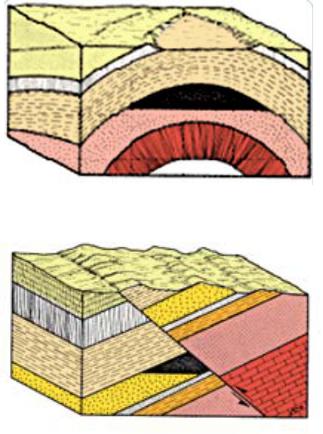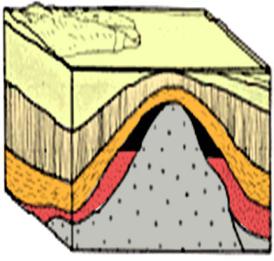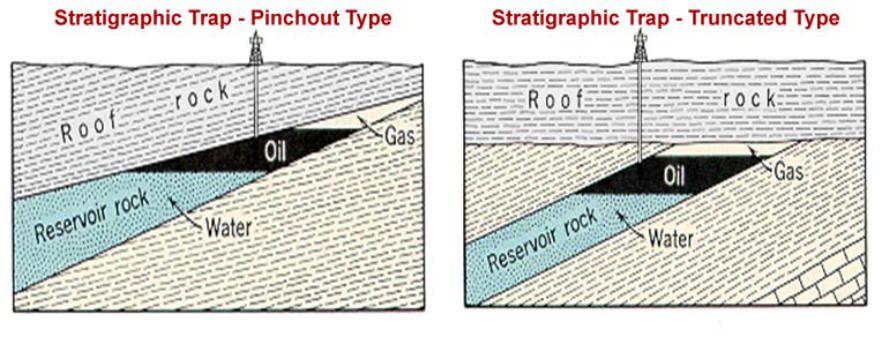
- •COURSE CONTENTS
- •Rock Types: Igneous Rock
- •Rock Types: Sedimentary Rock
- •Rock Types: Sedimentary Rock
- •Rock Types: Sedimentary Rock
- •Rock Types: Metamorphic Rock
- •Parameters Controlling Petroleum Occurrence
- •Migration of Petroleum
- •Entrapment of Petroleum
- •Structural Traps
- •Stratigraphic Traps
- •Combination Trap
- •Oil Exploration Method
- •Surface Geology
- •Geophysical Exploration
- •Geophysical Exploration
- •Geophysical Exploration
- •Sub-Surface Geophysical Exploration
- •Well Correlation
Entrapment of Petroleum
Oil, gas and water slowly migrate through permeable rocks, driven by natural forces of gravity (buoyancy) and pressure gradients.
When they meet an impermeable barrier, they can go no further, so oil and gas accumulate. This barrier is generally referred to as a trap.
Varying densities make the gas phase rise, while the water settles to the lowest point, and the oil remains in the middle.
Traps may be classified according to the manner in which they are formed, and categorized as structural trap, stratigraphic trap and combination trap.

Structural Traps
By far the greatest number of fields discovered world-wide and the largest proportion of total proven reserves are associated with structural traps.
Structural traps result from a local deformation such as folding and/or faulting of the rock layers.
Faulting can also produce traps by juxtaposing a reservoir against an impervious stratum.
Anticlinal oil traps
Structural oil trap caused by faulting

Draping or compaction over a buried hill, carbonate reef also produces traps on a smaller scale.
Sediment draping
Stratigraphic Traps
Most basins contain facies changes, unconformities with resulting truncated beds, and buried erosional or constructive surfaces such as reefs, hills, barrier sand bars, channels, and other related geologic phenomena which form the basic requirements for the creation of stratigraphic traps.
Stratigraphic trap is a general term for traps that are chiefly the result of a lateral variation in the lithology of the reservoir rock, or a break in its continuity. A permeable reservoir rock changes to a less permeable or to an impermeable rock.
Two common types of stratigrapic traps are Pinchout Type and Truncated Type.

